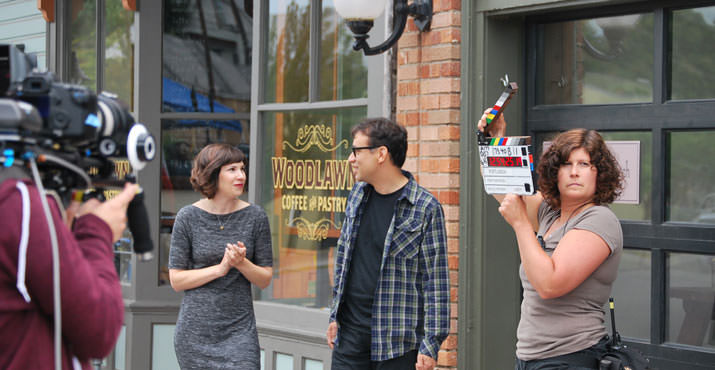
Oregon Legislature Nearly Doubles Film, Television and Digital Media Tax Incentives
Salem, July 8th, 2013. The state allocation in Oregon Production Investment Fund tax credit will go from $6 million a year to $10 million. The credits will benefit projects like Carrie Brownstein and Fred Armisen’s Portlandia, which is filmed in Oregon. The incentives were a very small part of a $16.7 billion spending plan the Legislature adopted for general fund and lottery revenue over the next two years: a 13 percent increase from the previous two-year budget.
A big piece of the pie will go to schools. The $6.55 billion K-12 budget for 2013-15 came in $835 million higher than the 2011-13 budget, an increase of 14.6 percent. Critics say not enough was done for job creation, small business encouragement, government pension reforms. Here’s a link to all of the Oregon State Press Releases about the new budget: http://www.leg.state.or.us/press_releases/
Still the film industry is happy. According to the Oregon Governor’s Office of Film & Television, the House concurred with the amendments the Senate passed for HB 3367 over the weekend. This translates to an increase in the annual allocation for the Oregon Production Investment Fund tax credit. Other important legislation that will positively affect Oregon’s film, television, and digital media industry includes HB 5028 which allows the Oregon Innovation Council to fund the Oregon Story Board, and SB 836 which exempts film, tv and theartical hair, and make-up professionals from certain cosmetology regulations. Below is more detailed information on the Bills from Vince Porter of the Oregon Governor’s Office of Film & Television.
HB 3367 – This bill became the home of several tax credits including the Oregon Cultural Trust tax credit. Regarding OPIF, not only does the bill increase the annual cap to $10 million a year, but it expands the local filmmaker program (commonly known as iOPIF) to include “Media Production Service Companies” (this is defined as post production and video game development projects). It also lifts the threshold for out of state projects to $1 million of spend in Oregon. For iOPIF the spending threshold will now be $75,000 on the low end and up to the first $1 million of a project. All other rules with OPIF and iOPIF will still apply. It’s important to note that the bill can not become law before the 91st day following adjournment sine die (early October).
HB 2505 – This bill directs money to the Oregon Business Development Department including a program called the Oregon Innovation Council which provides funding for several initiatives cross industry. Oregon Inc. received sufficient funding to fund a new project designed to grow and incubate Oregon’s digital media industry. The Oregon Story Board has already been at work on a few projects but with this funding, OSB will be moving into the world of incubating and accelerating digital media companies in Oregon. Contracts still need to be signed and formal plans finalized, but funding for OSB should begin later in the fall.
SB 836 – This bill came together very quickly earlier in the session when it became known that current Oregon statutes technically required professionals in the film and television industry that apply make-up or hair styling services to get a cosmetology license. SB 836 exempts film, TV, and theatrical professionals from this requirement as it applies to working on productions. This bill has already been signed by the Governor.
Writes Porter, “In short, this session proved to be a truly transformational one for Oregon’s film, TV and digital media industry. Hopefully we all will look back and consider this moment as a needle moving moment. With these new laws though comes great responsibility. We all must double our efforts to make sure these programs build the industry into something much bigger than it is today. At the film office we will be committed to finding ways to make sure this money is spent in the most efficient way. We will not rest on our laurels and will make sure we are a part of Oregon’s unique path towards building a world class creative industry cluster.”
















